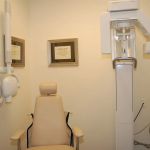How to Handle and Treat a Broken or Cracked Tooth
- 1 - Overview of a Cracked or Broken Tooth
- 2 - What to Do Immediately After Breaking a Tooth
- 3 - Treatment Options for Cracked Teeth
- 4 - How to Prevent Future Tooth Damage
- 5 - When to Seek Professional Help
1. Overview of a Cracked or Broken Tooth
Dealing with a cracked or broken tooth can be a daunting experience. A cracked tooth happens when there is damage to the enamel or even the internal structure of the tooth. It can occur due to trauma, biting on something hard, or even tooth decay. Some common signs of a cracked tooth include pain when chewing or biting, sensitivity to hot or cold, and visible cracks or chips.
2. What to Do Immediately After Breaking a Tooth
When you first break or crack a tooth, it’s essential to stay calm and follow a few crucial steps to prevent further damage. First, rinse your mouth with warm water to clean the affected area. If you’re bleeding, apply gentle pressure with a clean cloth or gauze. For pain relief, you can take over-the-counter pain medications such as ibuprofen. Avoid using the tooth until you have seen a dentist to avoid exacerbating the injury. If you’ve broken a large piece off, try to keep it in a safe place and take it with you to your dentist appointment.
3. Treatment Options for Cracked Teeth
The treatment for a cracked tooth depends on the severity and location of the break. If the crack is minor, a filling or dental bonding might be all that’s required. For larger cracks, your dentist may suggest a crown to protect the tooth and restore its function. In severe cases where the damage extends to the tooth’s nerve, a root canal might be necessary. This is why it’s critical to get professional dental care as soon as possible.
A personal story can help highlight the importance of timely treatment: Sarah, a 34-year-old marketing professional, once cracked her tooth while eating hard candy. She initially tried to ignore the pain, but the discomfort only worsened over the next few days. After seeing her dentist, she was advised to get a crown. If she had waited any longer, the tooth may have required a root canal.
4. How to Prevent Future Tooth Damage
To avoid a cracked tooth in the future, take these preventive measures:
- Avoid chewing on hard objects such as ice, popcorn kernels, or hard candy.
- Wear a mouthguard if you play sports or grind your teeth at night.
- Visit your dentist regularly for checkups to catch any potential weaknesses in your teeth.
- Maintain good oral hygiene by brushing and flossing daily.
5. When to Seek Professional Help
If you experience severe pain, persistent discomfort, or if you notice swelling in your gums, it’s time to see a dentist. The earlier you address a cracked tooth, the easier and less costly the treatment will be. Don’t wait until the pain becomes unbearable. Early intervention can save your tooth and prevent further complications.
Now that you know how to handle and treat a broken or cracked tooth, it’s crucial to act quickly when dental emergencies arise. If you're experiencing tooth pain or think you might have a cracked tooth, it’s best to consult with a dental professional immediately to get the care you need. Visit your local dentist or explore trusted online dental services to learn more about how you can address cracked tooth problems effectively.







 Virginia Family Dentistry Brandermill - Woodlake4.0 (724 review)
Virginia Family Dentistry Brandermill - Woodlake4.0 (724 review) Heritage Grove Family Dental - Plainfield Dental Clinic4.0 (1397 review)
Heritage Grove Family Dental - Plainfield Dental Clinic4.0 (1397 review) Buford Family Dental4.0 (1583 review)
Buford Family Dental4.0 (1583 review) Legacy Smiles Dentistry4.0 (151 review)
Legacy Smiles Dentistry4.0 (151 review) Small World Dental - Pediatric Dentist and Orthodontist4.0 (1469 review)
Small World Dental - Pediatric Dentist and Orthodontist4.0 (1469 review) Perfect Dental – Taunton4.0 (782 review)
Perfect Dental – Taunton4.0 (782 review) The Importance of Oral Health Education During Pregnancy for a Healthy Pregnancy
The Importance of Oral Health Education During Pregnancy for a Healthy Pregnancy Best Tips for Brushing Your Teeth Properly for Healthy Gums: Essential Techniques for Oral Health
Best Tips for Brushing Your Teeth Properly for Healthy Gums: Essential Techniques for Oral Health Why Skipping Dental Checkups Can Lead to Bigger Oral Health Problems
Why Skipping Dental Checkups Can Lead to Bigger Oral Health Problems Advantages of Porcelain Dental Restorations
Advantages of Porcelain Dental Restorations How Can Diabetes Cause Tooth and Gum Problems? Preventing and Managing Oral Health Issues
How Can Diabetes Cause Tooth and Gum Problems? Preventing and Managing Oral Health Issues Healthy Habits for Promoting Good Oral Health and Hygiene: Tips for a Healthy Smile
Healthy Habits for Promoting Good Oral Health and Hygiene: Tips for a Healthy Smile